Pere David's Deer seen in the wild at Yancheng Wetlands Reserve, just a few hours north of Shanghai! Pere David's are one of the rarest deer species in the world and was extinct in the wild until the 1980's! This species is one of China's few success stories now.
Weekend Wildlife Adventure to Yancheng, China (Jiangsu Province)
February 25-27, 2011
Check our Pbase gallaries for more images of the wildlife of Yancheng (click the link below!)
Wildlife of Yancheng, Jiangsu Province

A pair of Red-crowned (Japanese) Cranes strolling an empty fish pond's mud flats in Yancheng. In all we saw nearly 100 of these rare and spectacular cranes in the wild.
Located just a few hours north of Shanghai, Yancheng China offers a fantastic wildlife destination that allows for a phenomenal weekend wildlife adventure from Shanghai. Once again, I traveled with Zhang Lin from Shanghai Birding Tours whose expertise allowed us to see at least 75 species of birds and a couple great mammals!
Yancheng is a coastal town which is home to thousands of acres of fish pond and a nature reserve that serves the purpose of providing wintering grounds for the Chinese population of the Red-crowned Cranes (=Japanese Crane), which was our primary target species for the trip. I also wanted to get a good look at the recovering population of Pere David’s Deer who are found just south of Yancheng. We were very successful on both counts! By the end of the weekend trip, we had seen several dozen Japanese Cranes and at least a dozen wild Pere David’s Deer. We did not even have to venture south to Dafeng to see the captive breeding population of the deer as we were very fortunate to have come across two small wild herds near Yancheng.
The basic strategy of wildlife watching in Yancheng involves traveling the fish ponds looking for the various species that winter in the area. The dykes that separate the ponds provide simple mud roads that allowed us to venture deep in to the ponding zone. We were still deep in the wintering months so we were pretty lucky to come across great numbers of many of the species that spend these months in the region. Some of the more numerous species encountered include Common & Hooded Cranes and even the North American visitor, the Sandhill Crane! We also came across thousands of geese and ducks of many species. (See the below images and species list)
Yancheng offers an outstanding winter destination for wildlife observation. Only a few short hours due north, I can guarantee Yancheng will be an annual destination during our years in China!
Take a look at the images taken during this weekend wildlife adventure:
Red-crowned Cranes
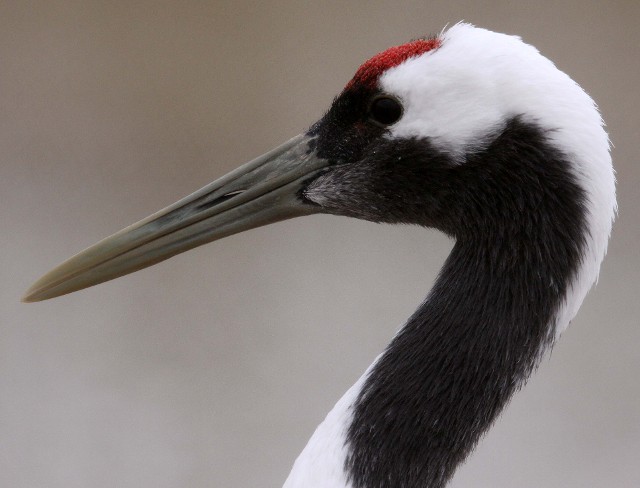
Red-crowned Crane (Grus japonica) seen in the breeding center of Yancheng.
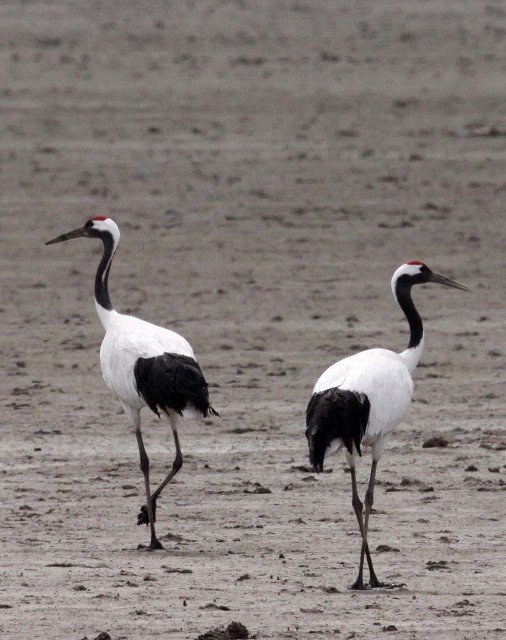
Red-crowned Crane (Grus japonica)

Red-crowned Crane (Grus japonica)

Red-crowned Crane (Grus japonica)

Red-crowned Crane (Grus japonica)
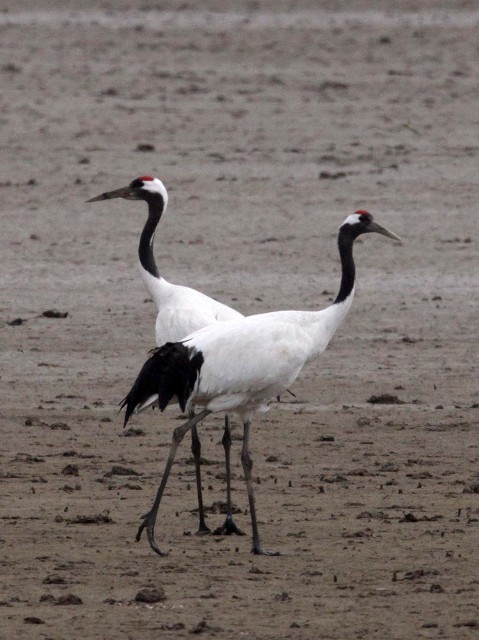
Red-crowned Crane (Grus japonica)

Red-crowned Crane (Grus japonica)
Other Crane Species!

Several dozen Hooded Cranes (Grus monacha) were seen while cruising the paddy fields of Yancheng.

Keeping true to their names, Common Cranes (Grus grus) were the most common cranes seen in Yancheng.

Common Crane pair near the breeding center.

We came across hundreds of individual Common Cranes in several flocks while spotting birds and deer in the paddy fields of Yancheng.

Grus grus!

While this is a horrible image, it at least shows two of the five to ten individual Sandhill Cranes (Grus canadensis) who find life better here in Yancheng, China than in the great American Northwest!
Other Birds!

A lifer for me, the Chinese Penduline Tits were very common trail-side companions along the banks of the fish ponds. They seemed to find life in the Pampas grass grand...

I was surprised to see this Black Swan in the ponds of Yancheng Wetlands Preserve. Chinese preserves often prefer to keep exotics in their areas to attract and entertain tourists. Black Swans are now considered to be residents and are listed in most bird guides now.

Bewick's Tundra Swans were also seen in the reserves ponds. We could not tell if their wings were clipped or not but wild swans are common in the area every year.

Oriental Storks were very common in many of the fish ponds of Yancheng. Very nervous, they rarely allowed good images though...
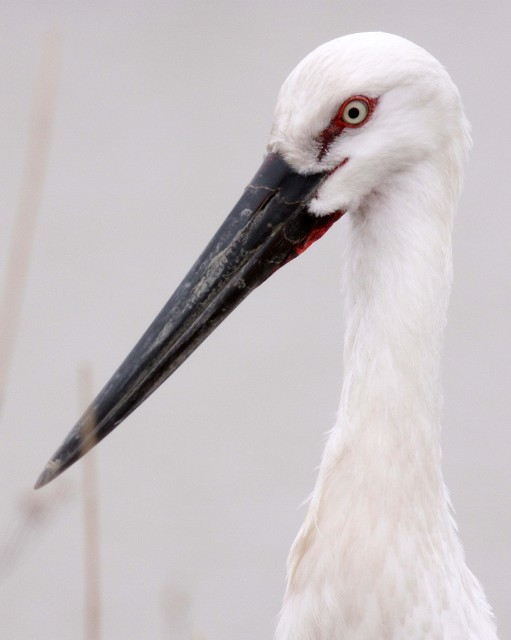
Oriental Stork
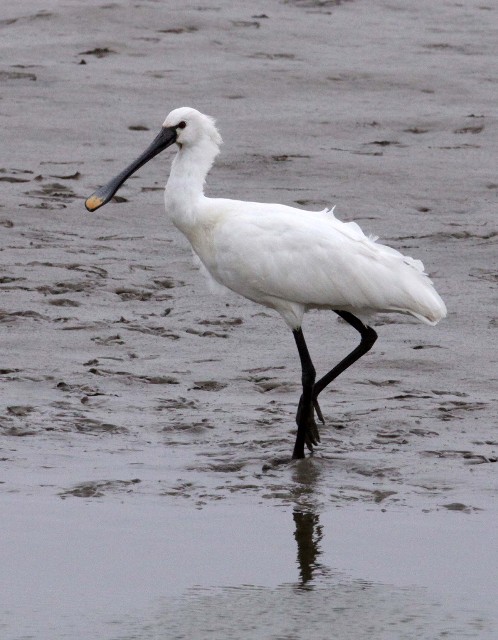
Eurasian Spoonbills were another very common species in Yancheng numbering in the high hundreds or more.

Spoonbills have the most peculiar shapes when in flight!

Along with Kentish Plovers and Dunlins, Common Sandpipers, like the one shown here, were the most common shorebirds in the area this weekend.
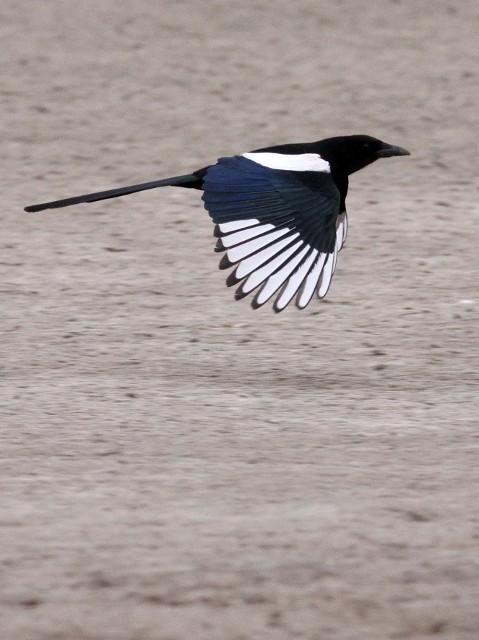
Common or Black-billed Magpies were omnipresent.

Yancheng boasts a healthy population of Azure-winged Magpies as well.

We lucked-out and caught a good sighting of a Grey-headed Lapwing in one of the ditches near the paddy fields.

A good weekend for gulls! Here we see a couple angry Mongolian Gulls screeching at their mate for who knows what reason....

Heuglan's Gulls were another very common gull species in Yancheng.

We caught only this small flock of Bean Geese but we saw much larger flocks of Greater White-fronted Geese.

There were thousands of ducks from nearly a couple dozen species in Yancheng. This Common Teal (Eurasian Teal) was seen swimming by in the reed wetlands of the main preserve.

There were many bird anomalies in Yancheng this weekend. The several hundred Mandarin ducks we saw in many different flocks were much further south than Zhang Lin had recorded before. They were a treat to watch!

The Mandarin Ducks often exploded in flight when we ventured to close for comfort.

What a beautiful duck species!

Goosanders (Common Mergansers) were another common species in Yancheng.

Of course there were tons of Common Coots, but this one looked strangely out of place way up on the support structures near one of the fish ponds...
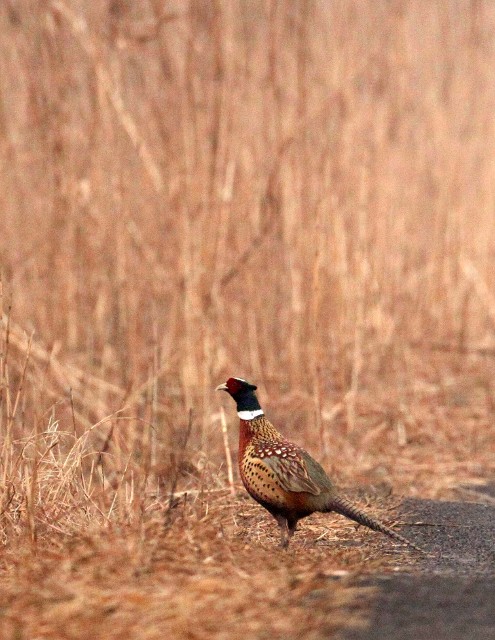
Ring-necked Pheasants were plentiful in the paddy fields of Yancheng.

Only a couple Common Eurasian Kestrels were seen in the fields of Yancheng. This one was soaked!

Common Eurasian Kestrel

Pallas's Reed Buntings were very common in and around the reed-edges of the ponds and paddy fields.

There was no shortage of Great White Egrets in Yancheng!

As forests are extremely rare in this part of Yancheng, we did not get many forest or woodland species. One notable exception was this lovely Goldcrest who blessed us with its presence for a brief moment on our first morning in the area.
Reed Parotbills!

There is little doubt that my favorite of all Chinese birds is the Reed Parrotbill (Paradoxornis heudei), found as an endemic only in this part of China. While locally it is not rare, it can be elusive until you know how to find them.

Even Zhang Lin is not sure what they eat. The seem to spend an inordinate amount of time simply pulling the reed layers off the stalks, perhaps to get at invertebrates inside the reeds.

Reed Parrotbill (Paradoxornis heudei)
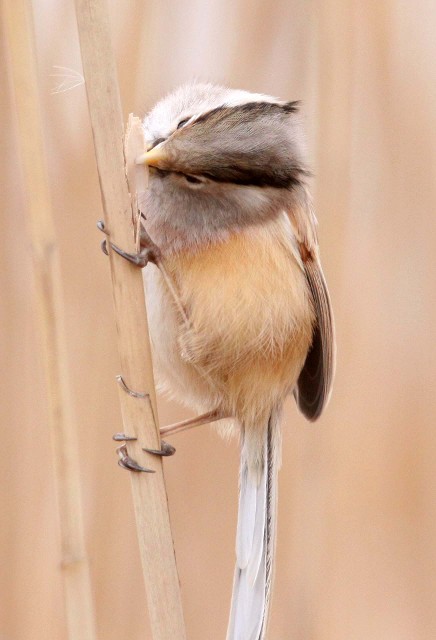
Reed Parrotbill (Paradoxornis heudei)
Interestingly our images from this trip we noticed by Planet Birds as well!

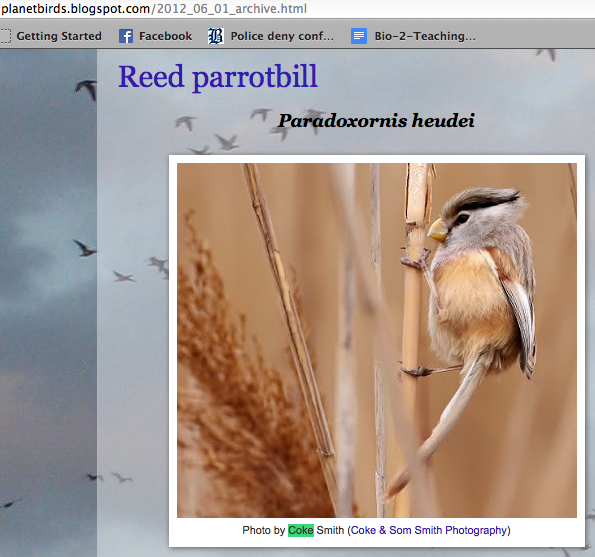
(Link Here)
Deer of Yancheng!

While we had made plans to originally drive south of Yancheng to see the captive herd of Pere David's Deer (Elaphurus davidianus) in Dafeng Reserve, we were very lucky to see this wild herd in Yancheng Wetlands Reserve. The deer represent one of China's many wildlife success stories. Slaughtered to extinction just after WWII, the deer were re-introduced from captive herds that were imported to Europe by a wealthy monarch many decades earlier!
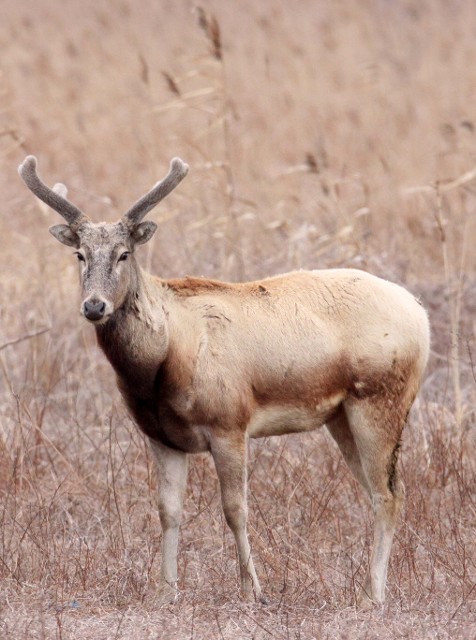
Pere David's Deer (Elaphurus davidianus) with young velvet antlers.

This is one of the only shots I was able to fire off of this extremely quick Chinese Water Deer. We spent considerable time tracking this elusive little devil in the paddy fields of Yancheng on our final morning there. He was very adept at diving in to ditches and staying very low to elude us!
Mammal List for Yancheng China
- Pere David’s Deer (Elaphurus davidianus)
- Chinese Water Deer (Hydropotes inermis)
Bird List for Yancheng
- Ring-necked Pheasant (Phasianus colchicus)
- Bean Goose (Anser fabalis)
- Greater White-fronted Goose (Anser albifrons)
- Bewick;s Tundra Swan (Cygnus columbianus bewickii) (Cap.)
- Black Swan (Cygnus atratus) (Cap.)
- Common Shelduck (Tadorna tadorna)
- Mandarin Duck (Aix galericulata)
- Gadwall (Anas strepera)
- Falcated Duck (Anas falcate)
- Eurasian Wigeon (Anas penelope)
- Mallard (Anas platyrhynchos)
- Eastern Spot-billed Duck (Anas zonorhyncha)
- Northern Shoveler (Anas clypeata)
- Northern Pintail (Anas acuta)
- Eurasian Teak (Anas crecca)
- Common Pochard (Aythya ferina)
- Tufted Duck (Aythya fuligula)
- Goosander (Mergus merganser)
- Little Grebe (Tachybaptus ruficollis)
- Great Crested Grebe (Podiceps cristatus)
- Oriental Stork (Ciconia boyciana)
- Eurasian Spoonbill (Platalea leucorodia)
- Eurasian Bittern (Botaurus stellaris)
- Black-crowned Night Heron (Nycticorax nycticorax)
- Grey Heron (Ardea cinerea)
- Great White Egret (Casmerodius albus)
- Little Egret (Egretta garzetta)
- Great Cormorant (Phalacrocorax carbo)
- Eurasian Kestrel (Falco tinnunculus)
- Peregrine Falcon (Falco peregrinus)
- Hen Harrier (Circus cyaneus)
- Eastern Water Rail (Rallus indicus)
- Common Coot (Fulica atra)
- Sandhill Crane (Grus canadensis)
- Common Crane (Grus grus)
- Hooded Crane (Grus monacha)
- Red-crowned Crane (Grus japonica)**
- Grey-headed Lapwing (Vanellus cinereus)**
- Northern Lapwing (Vanellus vanellus)
- Pied Avocet (Recurvirostra avosetta)
- Kentish Plover (Charadrius alexandrinus)
- Common Snipe (Gallinago gallinago)
- Spotted Redshank (Tringa erythropus) (V.)
- Common Sandpiper (Actitis hypoleucos)**
- Dunlin (Calidris alpina)
- Vega Gull (Larus vagae)**
- Mongolian Gull (Larus mongolicus)
- Heuglin’s Gull (Larus heuglini)
- Black-headed Gull (Chroicocephalus ridibundus)
- White-winged Tern (Chlidonias leucopterus)**
- Rock Dove (Columba livia)
- Oriental Turtle Dove (Streptopelia orientalis)
- Spotted Dove (Streptopelia chinensis)
- Hoopoe (Upupa epops)
- Great Spotted Woodpecker (Dendrocopos major)**
- Long-tailed Shrike (Lanius schach)
- Chinese Gray Shrike (Lanius sphenocercus)**
- Azure-winged Magpie (Cyanopica cyanus)
- Common Magpie (Pica pica)
- Eastern Great Tit (Parus minor)**
- Chinese Penduline Tit (Remiz consobrinus)**
- Plain Prinia (Prinia inornata)
- Vinous-throated Parrotbill (Paradoxornis webbianus)
- Reed Parrotbill (Paradoxornis heudei)
- Goldcrest (Regulus regulus)**
- White-cheeked Starling (Sturnus cineraceus)
- Naumann’s Thrush (Turdus naumanni)**
- Eurasian Tree Sparrow (Passer montanus)
- White Wagtail (Motacilla alba)
- Buff-bellied Pipit (Anthus rubescens)
- Chinese Grosbeak (Eophona migratoria)
- Little Bunting (Emberiza pusilla)
- Chestnut-eared Bunting (Emberiza fucata)**
- Pallas’s Reed Bunting (Emberiza pallasi)**
- Black-faced Bunting (Emberiza spodocephala)
Check our Pbase gallaries for more images of the wildlife of Yancheng (click the link below!)
Wildlife of Yancheng, Jiangsu Province
